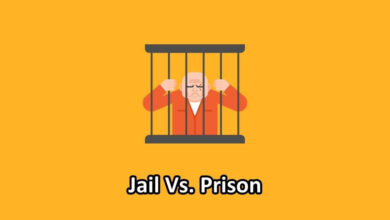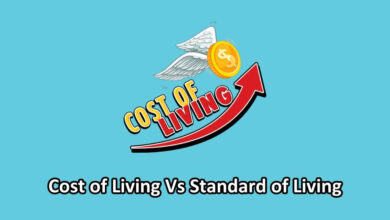Effective communication is the cornerstone of human interaction, influencing relationships, businesses, and societal structures. It serves as the bridge connecting individuals, groups, and cultures.
In today’s fast-paced world, the ability to communicate effectively has become more crucial than ever. Whether in personal relationships or professional settings, mastering effective communication skills is key to success.
Communication Vs. Mass Communication (A Comparison)
| Communication | Mass Communication |
|---|---|
| Communication is the process of exchanging information, ideas, thoughts, or feelings between individuals or groups. | Mass communication is a broader process of transmitting information to a large, diverse audience through mass media channels. |
| Communication primarily involves interactions between individuals or small groups, allowing for direct feedback and personalized exchange. | Mass communication targets a larger, often diverse audience, where feedback is limited, and the message is crafted to appeal to a broad spectrum of people. |
| It allows for real-time responses, facilitating a two-way exchange where both parties can adjust their messages based on the response. | Mass communication feedback might be delayed, indirect, and sometimes less interactive. |
| Messages in communication are often tailored to specific individuals or groups, considering their unique preferences, background, and context. | In mass communication, messages are crafted for a mass audience, requiring a more generalized approach to ensure broad appeal while sacrificing some degree of personalization. |
| It can occur through various channels, including face-to-face conversations, emails, and phone calls, allowing for flexibility in choosing the most suitable medium. | It relies on mass media channels such as television, radio, newspapers, and digital platforms, with a focus on reaching a wide audience simultaneously. |
What is Communication in a General Context
Communication is a dynamic process of exchanging information, thoughts, and feelings between individuals or groups. It involves a sender encoding a message, a channel for transmitting it, and a receiver decoding the message.
Effective communication goes beyond mere transmission; it ensures that the intended message is accurately understood by the recipient.
Fundamental Elements of Interpersonal Communication
Interpersonal communication relies on key elements such as verbal and non-verbal cues, active listening, and feedback. It’s not just about words spoken but also about understanding emotions, body language, and context.
Building rapport and trust are crucial components that foster successful interpersonal communication.
Examples of Everyday Communication Scenarios
From casual conversations with friends to workplace meetings, everyday communication is diverse. It can involve face-to-face interactions, phone calls, emails, and even non-verbal gestures. Understanding the context and adapting communication styles accordingly is essential for effective everyday communication.
What is Mass Communication
Mass communication involves the dissemination of information to a large audience through various channels. It is characterized by the sender being a large organization, the use of mass media, and limited feedback from the audience. Mass communication has a broader reach, aiming to inform, entertain, or persuade a wide and diverse audience.
Scale and Impact of Mass Communication in Society
The scale of mass communication is vast, impacting societies on a global scale. Mass media, including newspapers, television, radio, and the internet, shape public opinion and influence cultural trends.
The impact of mass communication on societal norms, values, and behaviors is profound, contributing to the shaping of collective consciousness.
Examples of Mass Communication Channels
Mass communication channels encompass traditional media like newspapers and television, as well as digital platforms such as social media, podcasts, and streaming services.
These channels serve as conduits for sharing information, entertainment, and advertising with a mass audience, showcasing the evolution of communication methods.
Key Differences between Communication and Mass Communication
Understanding the distinctions between communication and mass communication is crucial for navigating the complexities of information exchange in today’s interconnected world.
Feedback Mechanism
- Communication: Emphasizes immediate and direct feedback, fostering a two-way exchange where both parties can adjust their messages based on the response.
- Mass Communication: Feedback is delayed, indirect, and less interactive. The sender may not receive immediate responses from the vast audience, making it challenging to gauge the impact of the message.
Nature of Message
- Communication: Messages are often tailored to specific individuals or groups, considering their unique preferences, background, and context.
- Mass Communication: Messages are crafted for a mass audience, requiring a more generalized approach to ensure broad appeal while sacrificing some degree of personalization.
Channel of Communication
- Communication: This can occur through various channels, including face-to-face conversations, emails, and phone calls, allowing for flexibility in choosing the most suitable medium.
- Mass Communication: Relies on mass media channels such as television, radio, newspapers, and digital platforms, with a focus on reaching a wide audience simultaneously.
Interactivity
- Communication: Highly interactive, promoting a dynamic exchange of ideas, emotions, and information between participants.
- Mass Communication: Generally less interactive, with the sender having limited direct engagement with the audience. Interaction is often one-sided, with the audience receiving the message without actively participating in its creation.
Evolution of Communication Technologies
The evolution of communication technologies traces back to ancient forms like smoke signals and carrier pigeons, gradually progressing to written language, the printing press, and telegraph systems.
The 20th century witnessed revolutionary advancements with the advent of radio and television, paving the way for the digital age we are immersed in today.
Influence of Technological Advancements on Communication and Mass Communication
Technological advancements, from the telegraph to the internet, have transformed the speed, reach, and accessibility of communication.
The emergence of social media platforms, mobile devices, and high-speed internet has reshaped how individuals communicate, breaking down geographical barriers and enabling instant global connectivity.
Impact of the Digital Age on Communication Concepts
In the digital age, communication has become instantaneous and multimedia-rich. The rise of social media has empowered individuals to share their thoughts and opinions globally.
However, this era also brings challenges such as information overload, digital divides, and concerns about the authenticity of online communication.
Importance of Effective Communication in Mass Communication
Effective interpersonal communication skills play a pivotal role in the success of mass communication efforts. Behind every mass message is a team of communicators who must collaborate efficiently.
Clear and concise communication within this team ensures that the intended message is accurately conveyed through mass media channels. Without effective interpersonal communication, the risk of misinterpretation and inconsistency in messaging increases.
The Significance of Feedback and Audience Response
In the realm of mass communication, the audience’s response is a critical feedback mechanism. Understanding the pulse of the audience allows communicators to adjust strategies, refine messaging, and cater to the evolving needs of the public.
Social media platforms, in particular, provide real-time feedback that can be invaluable in shaping future communication endeavors. Analyzing audience responses helps in gauging the impact of a message and adjusting future campaigns accordingly.
Examples of Successful Mass Communication Campaigns
Examining successful mass communication campaigns reveals the power of effective messaging. Take, for instance, public health campaigns that effectively convey important information to a vast audience.
Clear and concise messaging, coupled with relatable narratives, contributes to the success of campaigns addressing issues like vaccination awareness or public safety. Understanding the audience and tailoring messages accordingly enhances the effectiveness of mass communication endeavors.
Challenges in Mass Communication
Mass communication encounters various challenges, ranging from technical issues to societal complexities. Technological glitches, budget constraints, and evolving media landscapes are common hurdles.
Moreover, maintaining a balance between informativeness and entertainment poses a perpetual challenge for communicators aiming to capture and sustain audience attention.
Issues of Noise, Misinterpretation, and Information Manipulation
Noise in communication refers to any interference that distorts the intended message. In mass communication, noise can manifest as distractions, competing messages, or technical glitches.
Misinterpretation arises when the audience perceives the message differently from the sender’s intention.
Additionally, the potential for information manipulation, especially in the era of digital media, raises ethical concerns regarding the dissemination of accurate and unbiased information.
Ethical Considerations in Mass Communication
The power wielded by mass communication brings forth ethical considerations. Communicators must navigate the fine line between freedom of expression and the responsibility to provide truthful, unbiased information.
Avoiding sensationalism, ensuring privacy, and maintaining transparency are essential ethical principles in mass communication.
Conclusion
In conclusion, effective communication, whether interpersonal or mass, is a linchpin in shaping societal norms and facilitating information exchange. Understanding the nuances of both forms of communication, recognizing the impact of evolving technologies, and addressing challenges are crucial steps toward fostering a more informed and connected society.
The blog has highlighted the interconnectedness of communication and mass communication, showcasing how advancements in one realm influence the other.
In an era dominated by information flow, recognizing these connections is vital for adapting to the ever-changing landscape of communication.



